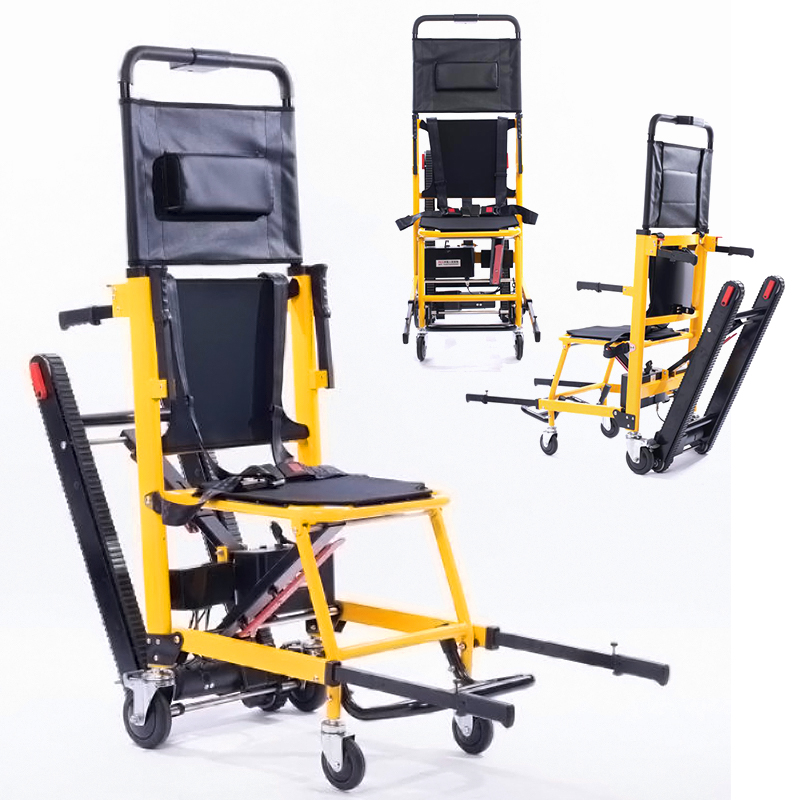Introduction to Challenges of Stair Climbing
Navigating stairs can be a significant challenge for individuals with disabilities, often presenting physical and cognitive barriers that can limit independence and accessibility. With the prevalence of multi-level buildings, both residential and commercial, the need for effective solutions is pressing. This article explores various strategies and technologies designed to empower disabled individuals in climbing stairs safely and independently, focusing on innovations such as stair climbers for the disabled, including wholesale and custom options provided by manufacturers and suppliers worldwide.
Understanding Different Types of Disabilities
● Mobility Impairments and Stair Navigation
Individuals with mobility impairments may find stair navigation particularly daunting. These disabilities can stem from various conditions, such as muscular dystrophy, spinal cord injuries, or age-related decline. Custom stair climbers for the disabled offer tailored solutions that cater to these specific needs, ensuring safe and effortless stair access.
● Visual Disabilities and Spatial Awareness
Stair climbing can also pose significant challenges for those with visual disabilities. Spatial awareness and depth perception are crucial in safely navigating stairs. Technology, such as tactile paving and auditory signals, can enhance stair safety for the visually impaired.
Stairlift Solutions and Their Advantages
● Different Types of Stairlifts
Stairlifts are an invaluable asset for those unable to climb stairs independently. These devices, which include chair and platform models, provide a secure way for users to ascend and descend stairs. The rise in manufacturing of stair climbers for the disabled has led to a wide range of wholesale options, catering to diverse needs and preferences.
● Safety Features and Ease of Use
Modern stairlifts incorporate advanced safety features, such as seatbelts, obstruction sensors, and smooth start-stop mechanisms. These features, provided by reputable stair climber for disabled factories, ensure user peace of mind and straightforward operation.
Alternative Mobility Aids for Stair Climbing
● Use of Crutches, Canes, and Walkers
While stairlifts offer a mechanical solution, traditional mobility aids like crutches, canes, and walkers remain vital. These tools require adequate training and support from caregivers to ensure safe stair navigation.
● Role of Caregivers and Personal Assistants
Caregivers play an essential role in assisting disabled individuals with stair navigation. Proper training in using both traditional aids and modern stair climbers for the disabled is crucial.
Home Modifications for Stair Accessibility
● Installing Ramps and Handrails
Home modifications, such as ramps and handrails, can significantly improve stair accessibility. These adjustments, often recommended by stair climber for disabled suppliers, enhance safety and independence.
● Smart Technology and Voice-Activated Systems
Smart technology is revolutionizing home accessibility. Voice-activated systems can control stair climbers, providing an additional layer of convenience for users with limited mobility.
Public Infrastructure and Accessibility Laws
● Importance of Compliance with ADA Guidelines
Public infrastructure must adhere to accessibility laws, such as the Americans with Disabilities Act (ADA). These guidelines mandate that public spaces, including stairs, are accessible to all, promoting inclusive environments.
● Government Incentives for Accessibility Upgrades
Governments worldwide offer incentives for businesses and homeowners to make accessibility upgrades. These initiatives encourage the adoption of stair climbers for disabled individuals, ensuring broad availability.
Innovations in Stair Climbing Technology
● Robotic Stair Climbing Devices
Recent advancements have led to the development of robotic stair climbing devices, offering a groundbreaking solution for those with severe mobility impairments. Manufacturers are continually innovating, with each factory striving to enhance these technologies.
The Role of Physical Therapy and Rehabilitation
● Building Strength and Balance for Safer Stair Use
Physical therapy is crucial in preparing individuals for stair use. Programs focusing on strength and balance can improve overall mobility and confidence, complementing the use of stair climbers for disabled individuals.
● Personalized Exercise Programs
Rehabilitation centers often offer personalized exercise programs tailored to individual needs. These programs can work in tandem with mechanical aids to optimize mobility outcomes.
Psychological Impact and Support Systems
● Overcoming Fear and Anxiety Around Stairs
The psychological impact of mobility challenges cannot be overlooked. Fear and anxiety about stair use are common, and addressing these concerns through therapy and support systems is vital.
● Encouragement from Support Groups and Communities
Support groups provide a platform for individuals to share experiences and strategies. Communities play a critical role in encouraging the adoption and use of stair climbers for disabled persons, fostering a sense of belonging and empowerment.
Future Trends in Accessibility and Inclusion
● Emerging Technologies for Enhanced Mobility
The future of accessibility is bright, with emerging technologies offering unprecedented levels of independence for disabled individuals. Ongoing research and development promise continued advancements in stair climbers for the disabled.
● Prospects for Universal Design in Urban Planning
Universal design principles are being increasingly integrated into urban planning, ensuring all environments are accessible. These inclusive designs, supported by manufacturers and suppliers of stair climbers for disabled individuals, promise a future where mobility challenges are significantly reduced.
Conclusion
Accessibility is a fundamental right, and empowering disabled individuals to navigate stairs safely is a crucial step toward inclusivity. Through innovative technologies, home modifications, and community support, we can create environments that cater to everyone's needs. As the industry continues to evolve, the collaboration between stair climber for disabled manufacturers, factories, and suppliers will remain vital in meeting the diverse requirements of this community.
About Suqian Excellent Science And Technology Co., Ltd.
Suqian Excellent Science And Technology Co., Ltd. is a leading manufacturer of rehabilitation therapy supplies, specializing in mobility aids such as stair climbing wheelchairs. Located in Shuyang National Economic and Technological Development Zone, Suqian City, Jiangsu Province, EXCELLENT stands for unparalleled product quality and customer satisfaction. Our commitment to "quality first, reputation first" has earned us certifications from CE, FDA, SGS, ISO9001, Intertek, ECM, and 3C, and our products are praised globally. EXCELLENT continues to innovate, offering custom solutions to enhance mobility and improve life quality for all users.

Post time: 2025-04-27 03:13:02

.png)





































